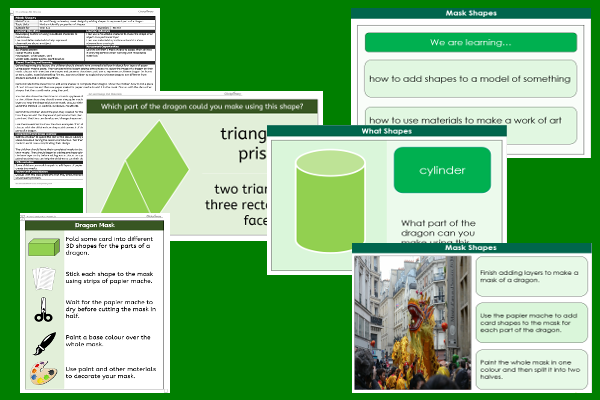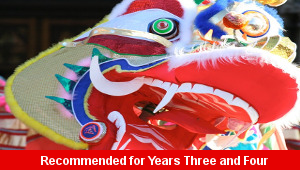Lesson Five – Mask Shapes

This art and design teaching pack for Key Stage Two gets the children to explore how to develop and complete the design of a mask by adding some special shapes to represent and match different parts of a dragon.
The class can identify and describe some of the special techniques and methods that can be used when working with mouldable materials to create suitable shapes.
Download this teaching pack including a lesson plan, classroom activities and an interactive presentation to explore how to develop and complete the design of a mask by adding some special shapes to represent and match different parts of a dragon
Activities in this teaching pack include display posters to identify and explain how to add attachments to a mask representing a dragon and a worksheet to follow a set of instructions about how to add 3D shapes to a mask of a dragon representing different parts and features.
The interactive presentation can be used to explore how to develop the design of a mask by adding a range of shapes to represent different parts of a dragon.
This lesson is part of an art and design scheme of work to get the children to select and combine different mouldable and other materials to create masks representing dragons that can be worn during a performance dance. There are teaching activities for shared learning, differentiated worksheets to support independent learning and interactive presentations to introduce concepts and key skills.
-

Changing Seasons
Investigate changes that can happen to the natural world during the four seasons of the year and reflect on similar changes that can occur in people’s lives
-

Chinese Dragons
Select and combine different mouldable and other materials to create masks representing dragons that can be worn during a performance dance
-

Suffix Combinations
Identify and record how to build a range of special words by using different combinations of roots and suffixes
-

Ancient Greek Games
Explore the development of the Olympic Games that began during the history of Ancient Greece and make comparisons with modern competitions
